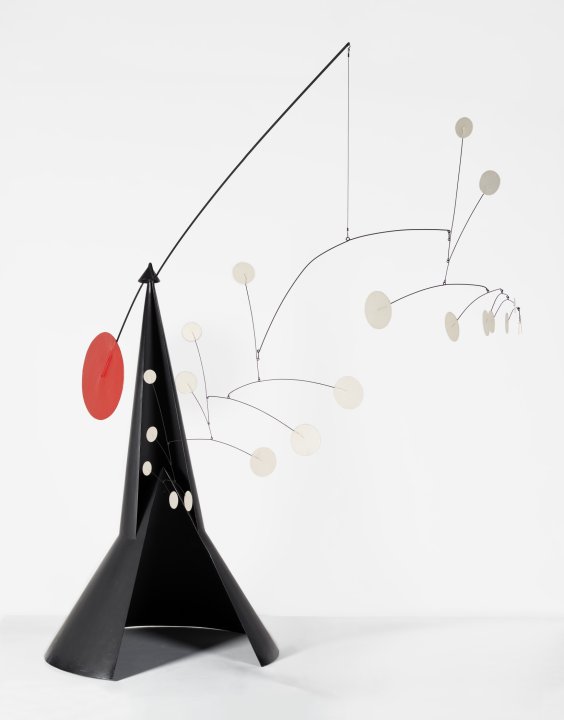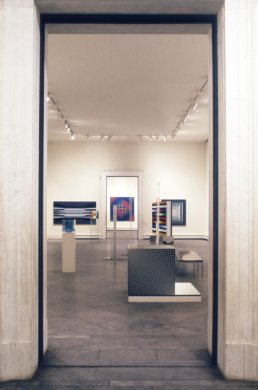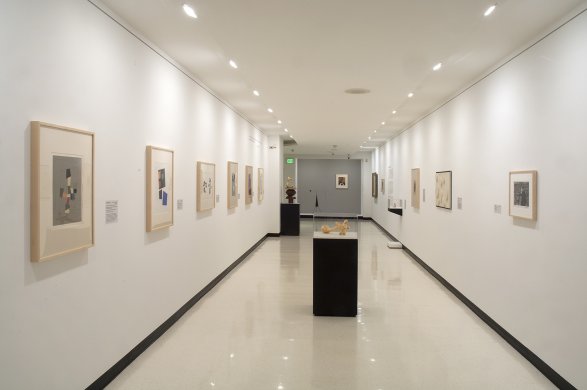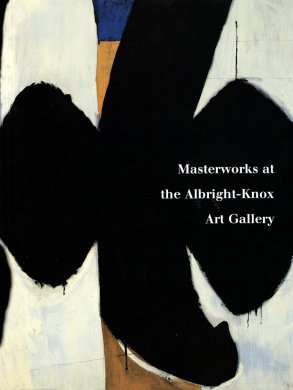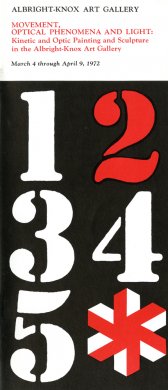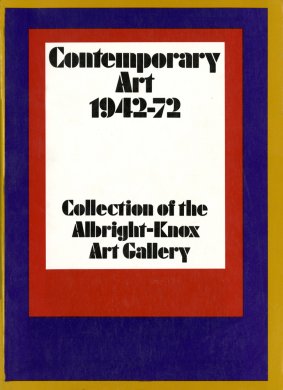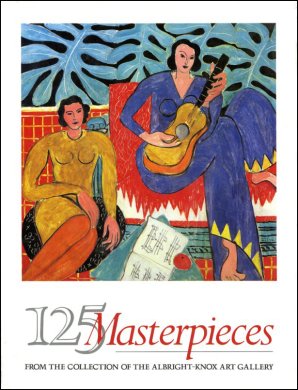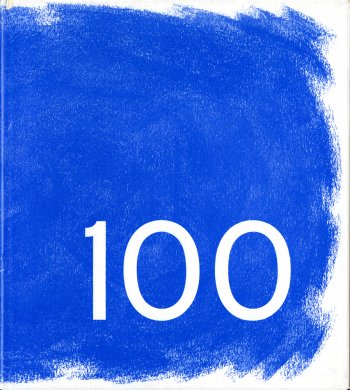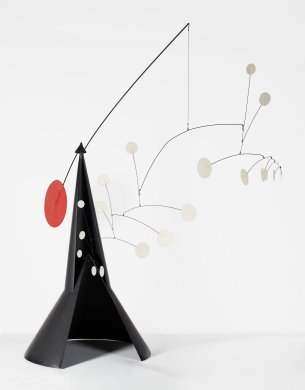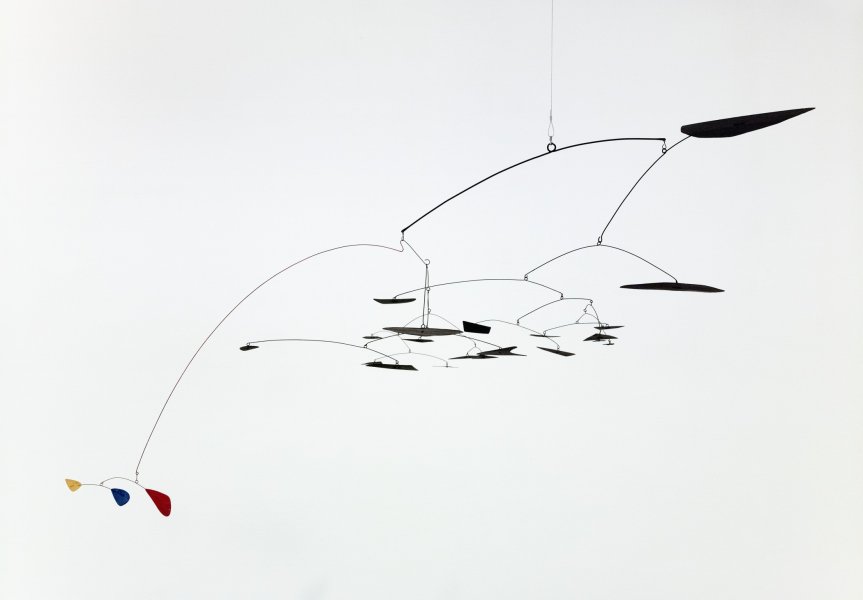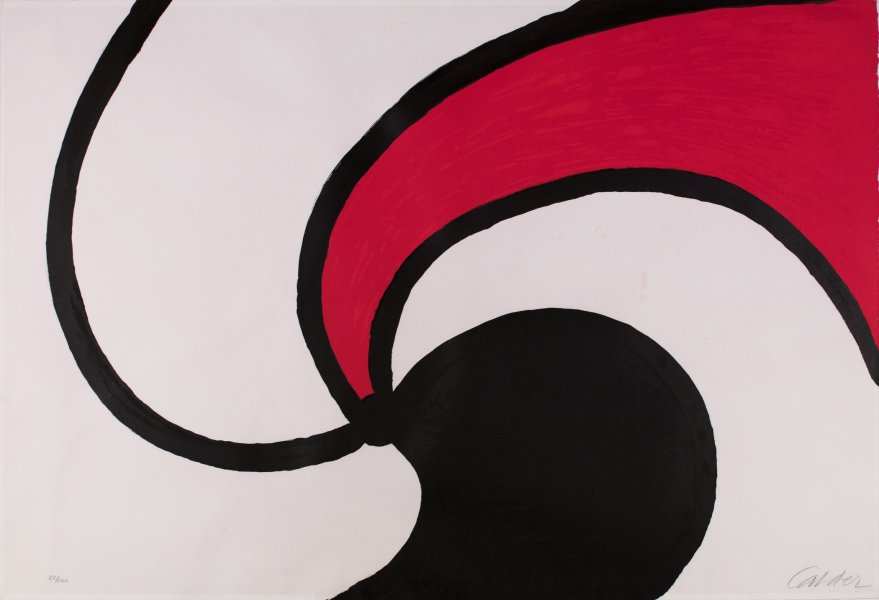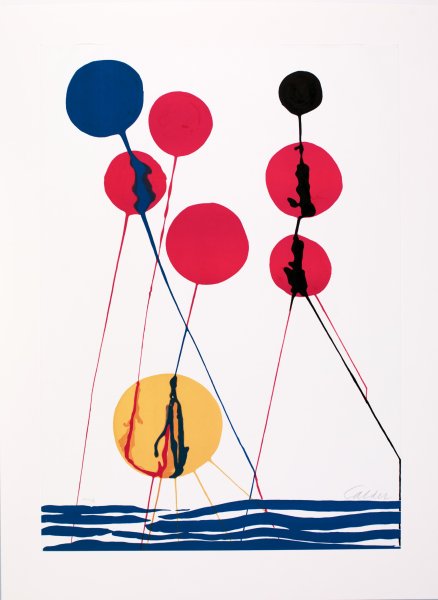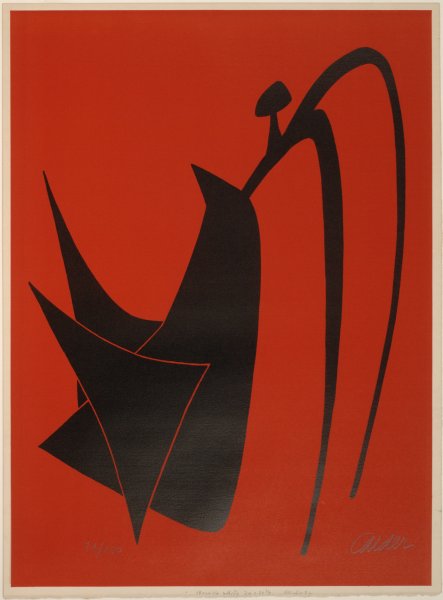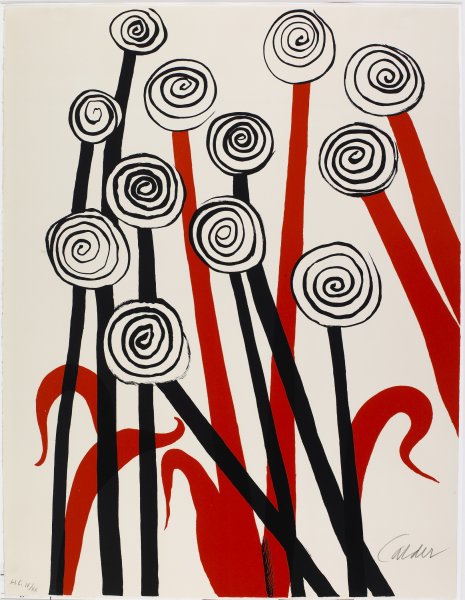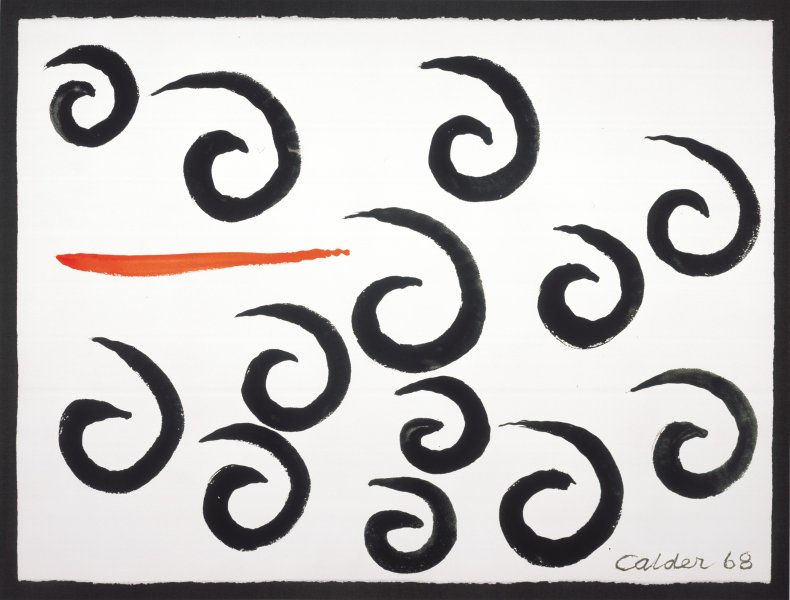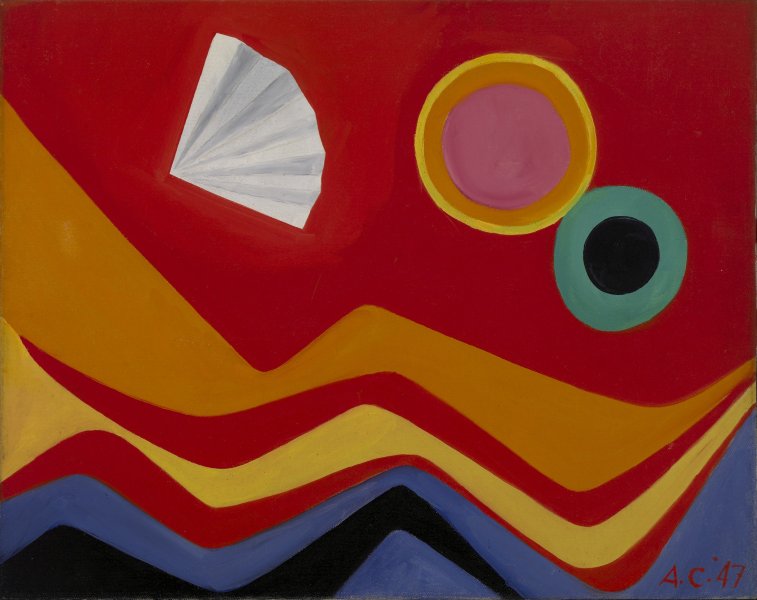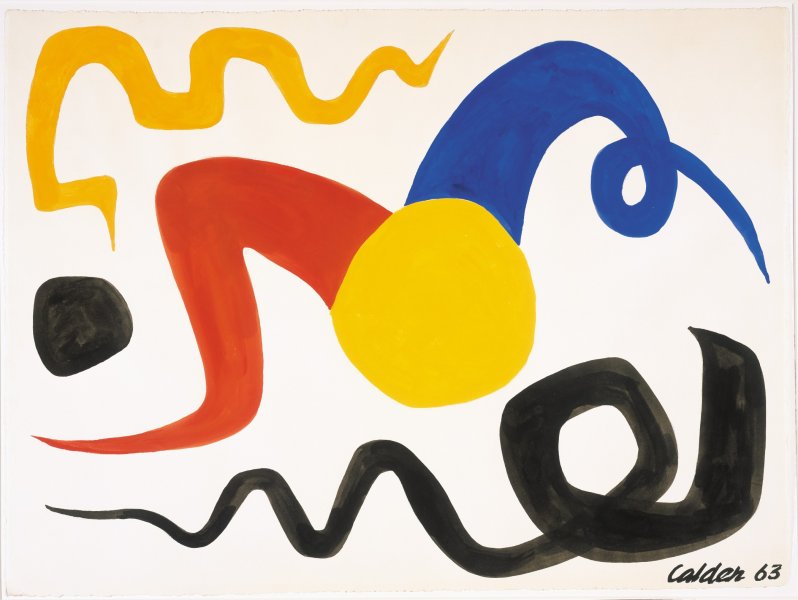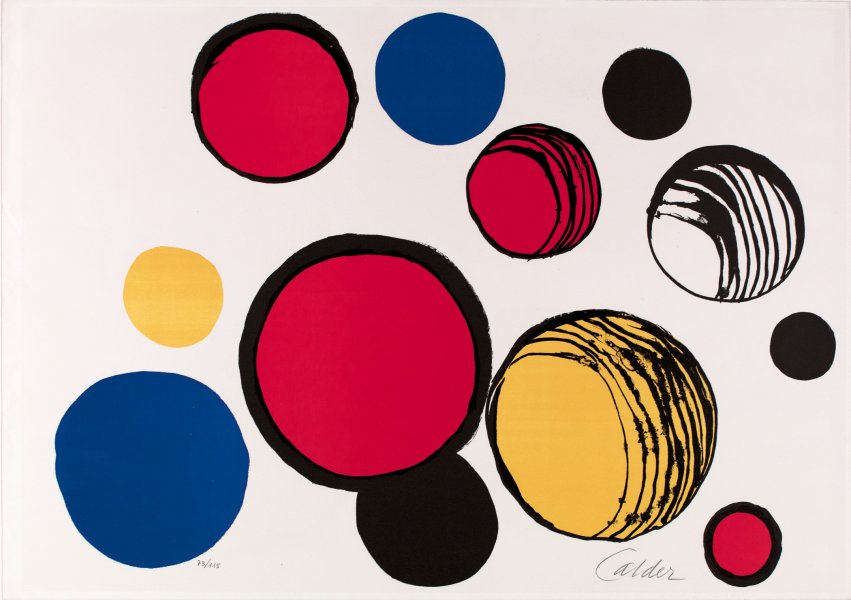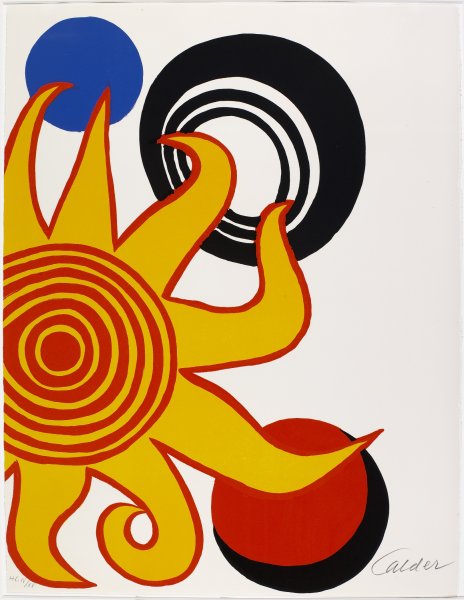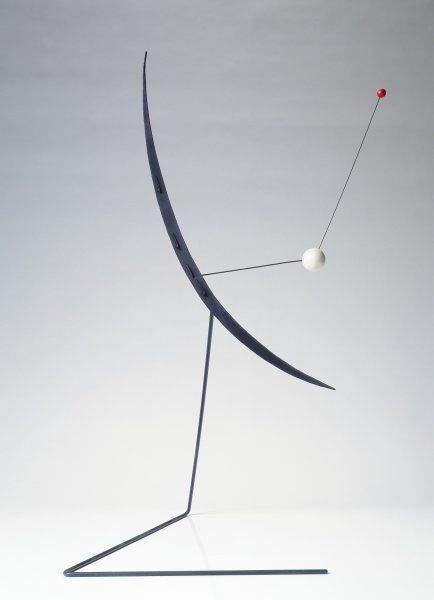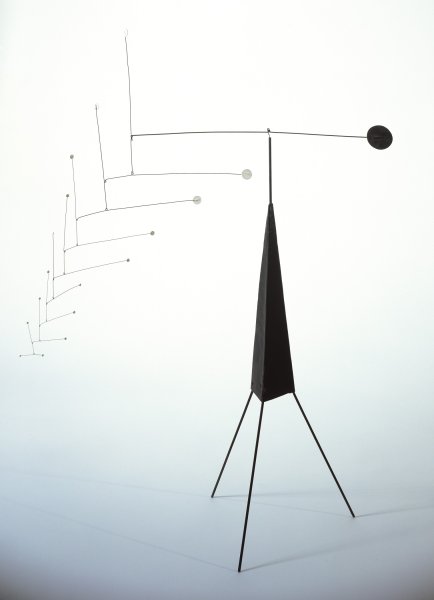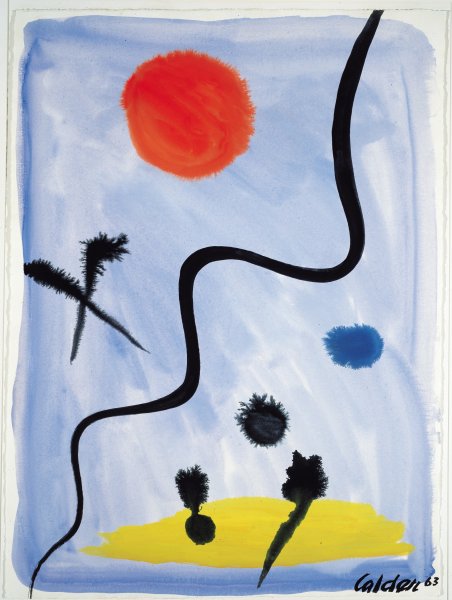Alexander Calder
American, 1898-1976
The Cone, 1960
Artwork Details
Collection Highlight
Materials
painted metal
Measurements
overall: 100 x 110 x 65 inches (254 x 279.4 x 165.1 cm)
Collection Buffalo AKG Art Museum
Credit
Gift of Seymour H. Knox, Jr., 1961
Accession ID
K1961:24
Alexander Calder changed the course of modern art with his whimsically abstract sculptures that explore balance and motion in a restricted, primary color palette. In 1930, Calder visited the artist Piet Mondrian at his Paris studio. Mondrian’s set of self-imposed limitations and his continual repositioning of similar elements to create new compositions impressed him. Calder remarked that he wanted to make Mondrian’s paintings “oscillate.” Mondrian was unreceptive, yet the encounter inspired Calder to abandon representational forms in favor of abstract, geometrical constructions. He is now celebrated for his invention of two sculptural archetypes—the “stabile” and the “mobile.” The stabile is static, with delicate, motionless components, such as wire or thin metal rods. The same elements on a mobile are designed to move independently, for instance, when stirred by a light breeze or motor. The Cone combines both of these concepts into a singular work. The stabile portion consists of two black conical shapes. Calder placed one asymmetrically over the other and cut both to create a triangular void. A rigid rod forms the mobile portion. A large red circle is attached at one end and is balanced by a freely moving arrangement of white circles suspended from the other end. Calder welded the connecting rod to a separate small cone, which rests on the apex of the stabile and pivots at will to create an ever-changing composition.
